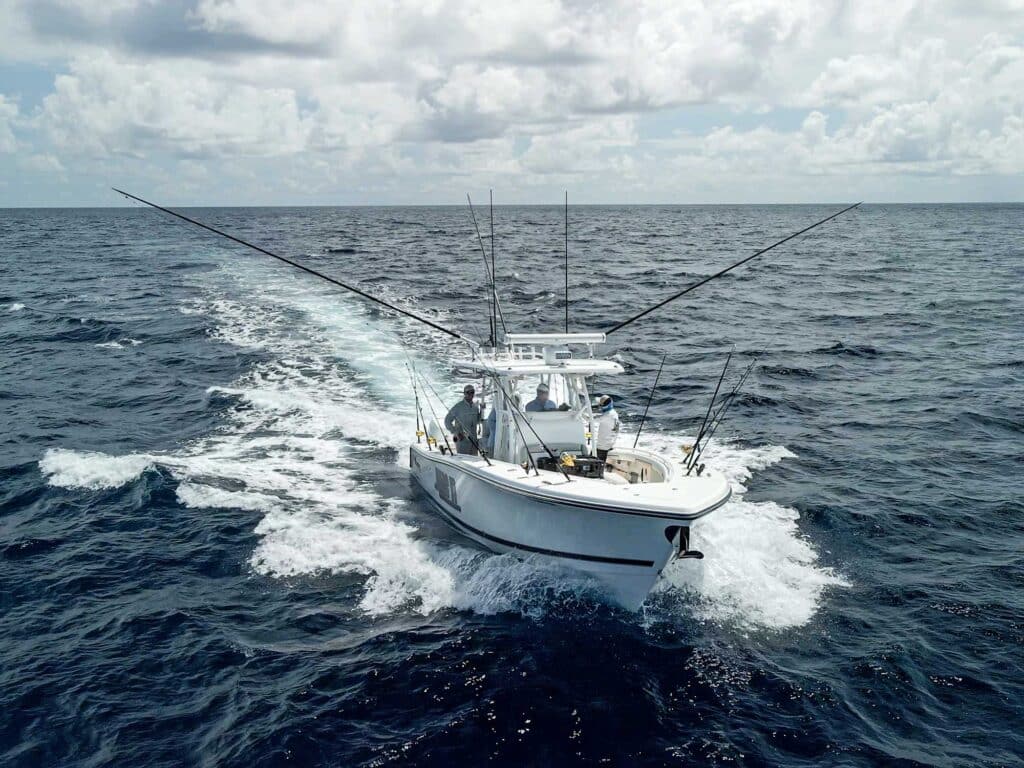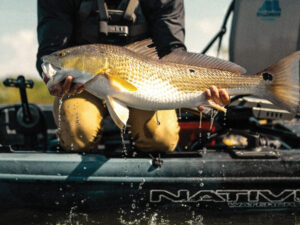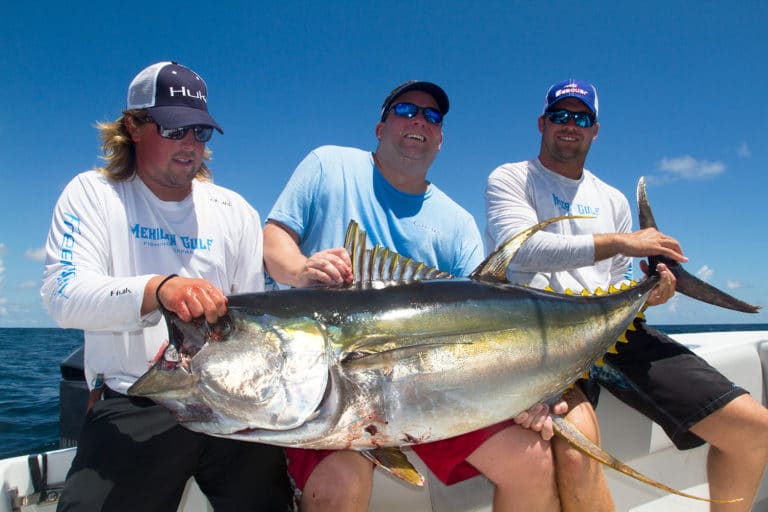
Every small-boat angler knows that it’s tough to achieve the optimal trolling spread. Bigger boats have an obvious edge. Their broader beam, higher freeboard, and greater number of strategically located rod holders enable the deployment and easy management of extra lines. Meanwhile, anglers aboard 25- to 35-footers are always on the lookout for alternate trolling patterns and equipment that will boost their results.
To explore some options, I talked with a tournament captain and veteran anglers from companies such as Tigress, Taco, DuBro, AFTCO and Tournament Cable, which specialize in trolling booms, tridents, release clips, and other aftermarket tools and accessories that you can add to your boat to raise and hook more fish on the troll.
To extend the width of the trolling spread, skippers with a big enough boat (32-plus feet) can use outriggers as long as 24 feet and run two or three lines plus a dredge off each. Smaller boats are limited to 18- to 20-foot riggers, which generally lack the backbone to drag a multitiered dredge. Some opt for towing a dredge from a stern cleat, but Tigress and Tournament Cable offer a better solution: 4-, 6- or 8-foot dredge/teaser booms that let you move the teaser out of the prop wash and into clean water.
Made from aluminum pipe or fiberglass, such booms fit into a gunwale rod holder or attach to a bent-butt section placed in a holder. Some feature a heavy tow line that runs through a pulley at the end of the boom. The Tigress dredge boom can be equipped with an electric reel. All come with safety and stay lines to alleviate strain on both the rod holder and the boom.
A downrigger boom can also pull a dredge or teaser while keeping it away from the hull and the motors. Attach the downrigger ball and you’ll add depth. Some pros advise substituting the downrigger cable with 300- or 400-pound Spectra braid to reduce drag and the ensuing strain on the boom.
Adding a center rigger to the boat’s T-top is another way to expand your spread, and it creates a better presentation for a bait run well behind the transom. It also affords the option to run a second line and place a bait closer to the boat to complete a desirable V-shaped spread coming off the prop wash. Available with bolt-on or clamp-on mounts, these telescoping outrigger-style poles range from 8 to 16 feet in length and are made from aluminum or carbon fiber.
Though not quite as effective, adding a clamp-on or welded rod holder in the center of the T-top’s aft-facing edge provides similar benefits. Of course, clamp-on rod holders can be mounted at various angles in other areas of the T-top to spread trolling lines, a tactic popularized by kingfish tournament competitors.
Release clips and simple rubber bands also help add lines and change bait presentations. DuBro’s downrigger release allows you to stack lines at various depths along the downrigger cable or planer tether.
A release clip can be used to run a flat line from one of the transom eyes to fish a bait close to the water’s surface. Some captains thread a piece of heavy mono through the clip and the transom eye, then crimp it to form a loop. AFTCO sells its Roller Troller, a flat-line clip that takes the rigging out of the equation and features a roller to prevent line chafing.
With these options, even on a small center-console, you can troll more lines or simply widen your spread for added coverage. But don’t go overboard. The number of lines you can successfully troll depends on more than your boat’s size. Also take into account the size and experience of your crew, the weather, and the presence of floating grass. Pulling four baits effectively beats messing with eight that don’t swim right and lines that constantly tangle.









